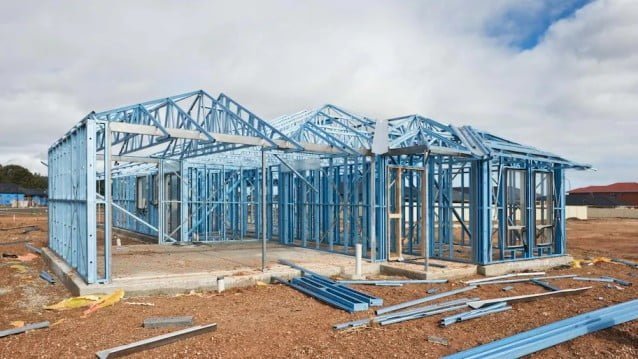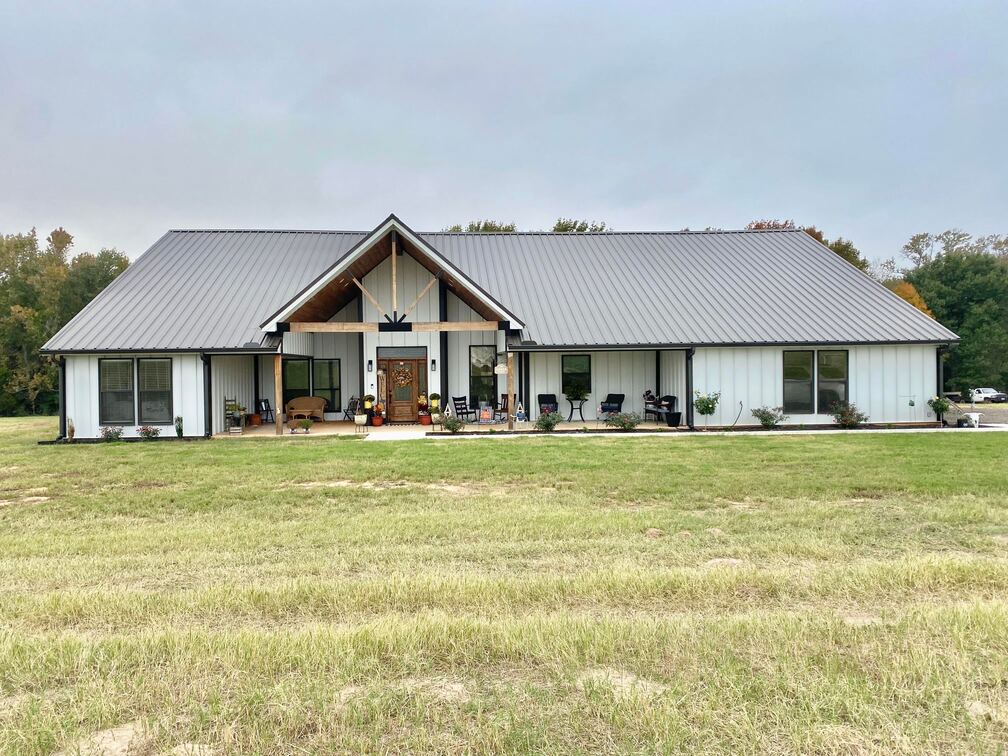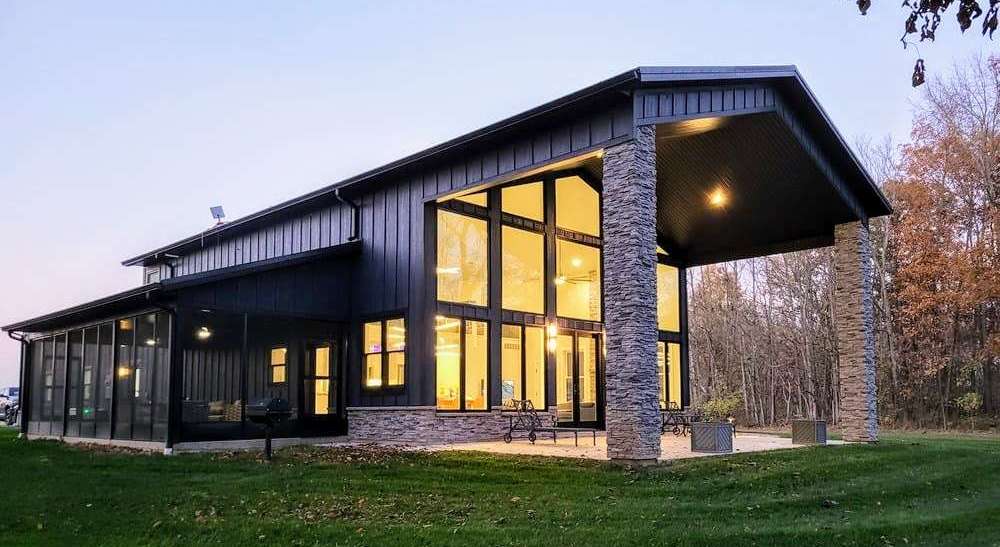
Deciding on the suitable building materials for your home is no small task. Steel-framed homes have shaped America’s architectural landscape since the 1800s, symbolizing resilience and innovation. This article will reveal how steel frames revolutionized housing and what they hold for your future home dreams.
Table of Contents
The Origin of Steel-Framed Homes in America
The seed of steel-framed homes in America was sown by a catastrophic fire, fueling an architectural revolution that would change the landscape of American home building. This pivotal moment ignited an interest in metal as a more resilient construction material, marking the beginning of a new era for durable and fire-resistant dwellings nationwide.
Interest Sparked By A Fire
The Great Chicago Fire of 1871 destroyed miles of wooden buildings and changed everything. People started thinking hard about how to make safer houses and buildings. They began considering steel and iron because they are less combustible than wood.
Builders began using new materials to prevent another big fire disaster. Iron and steel frames became popular because they were much stronger against flames. This shift led to a new way of constructing homes across America, known as steel-frame construction.
The Early Steel Frame Houses in America
Diving into the pioneering phase of American home architecture, we uncover the bold transition to steel frame houses—a leap of innovation that reshaped both skylines and residential living.
The Lovell Health House
The Lovell Health House stands out in American history as a pioneer of steel-framed residential architecture. Built in the 1920s by Richard Neutra, it showcased an innovative use of metal home kits and skeleton frame construction.
This iconic building was more than a house; it was a statement on modern living and health. Neutra designed the house for Dr. Phillip Lovell, who believed in the healing powers of sunlight and fresh air. With its large windows and open layout, the structure allowed natural elements to play a crucial role in the home’s design.
Steel framing made this possible by supporting wide spans without bulky walls or columns. Materials like gypsum wallboard replaced traditional lath and plaster in the interiors, creating cleaner lines and simple surfaces that reflected light throughout the space. The Lovell Health House became more than just walls and a roof—it embodied forward-thinking ideals that would influence future generations.

The Stran-Steel House
Moving from the Lovell Health House, another trailblazer in steel frame construction was the Stran-Steel House. This house marked a significant moment for American architecture. Built with cold-formed steel framing and clad in metal lath, it offered a new vision for home building.
Bolts and screws held everything together tight. No need for welds or heavy equipment on this job! The Stran-Steel House withstood harsh weather and time thanks to its sturdy metal roofing and siding.
Inside, walls were plastered smooth, much like traditional homes of the era. But these weren’t just any walls—they were fastened onto steel studs with better fire resistance than wood-framed buildings. Architects noticed how this innovative use of materials could transform residential design forever.
Receive Quotes from Multiple Barndominium Builders & Kit Providers Near You Today (It's Free!)
Fill in this 1-minute form below and receive estimates for your project without having to find them yourself! Let them do the work.
The Rise of Lustron Steel Homes
Lustron Steel Homes emerged as a clever solution to the housing crisis after World War II. Carl Strandlund invented these homes using cold-rolled steel that was both durable and easy to produce.
The company he founded quickly became famous for making steel-framed houses available across America. With nearly 2500 homes built, Lustron Homes changed people’s thoughts about residential construction.
These houses were unique because they could be put together like giant puzzles. Each piece of the home came out of factories set up by Standlunds and was designed to fit perfectly with the others.
This made building them fast and efficient—a major plus for families eager to start fresh in the post-war era. Lustron’s approach showed that prefab houses weren’t just quick fixes but could also offer lasting quality and comfort.
Steel Frame Homes in Notable Buildings
Beyond the residential realm, steel’s robust character has allowed it to form the backbone of some iconic American structures. It’s not just homes—buildings like The White House have leveraged this sturdy material, showcasing both its versatility and enduring appeal in architecture that stands the test of time.
The White House
The White House symbolizes America, but it’s not just about politics. It’s also about steel-frame innovation. During President Truman’s time in office, the historic building got a major makeover with steel framing and reinforced concrete. This significant change helped ensure that the White House could stand strong for years.
Builders used heavy beams and load-bearing walls to improve the structure. They also added layers of fireproof materials like gypsum board, creating safe spaces inside this iconic building. The renovation meant the White House could keep its classic look on the outside while getting modern interior updates.
Current Trends in Steel Framed Homes
Steel-framed homes are now more innovative and flexible than ever. Designers craft these homes to meet the unique needs of each family, using Building Information Modeling (Revit) to see the final product before construction starts. These models help fix problems early on, saving time and money.
Eco-friendly features in steel homes are also grabbing attention. More builders use recycled steel for frames, reducing waste. Homes get energy-efficient with better insulation techniques like sheathing and cladding systems. This means lower bills for heating and cooling.
According to Strucsoft Solutions, builders also focus on strength by choosing cold-formed or hot-rolled steel, depending on the need. They ensure houses can withstand harsh weather using sturdy fastening systems that keep everything tight and safe during storms or earthquakes.
Modern steel-framed homes, such as barndominiums and pole barn homes, blend beauty with toughness. Some choose sleek designs with large windows that fill rooms with natural light. Others go rustic, mixing wood veneer or masonry outside for a warm touch. As building codes change, steel keeps up easily because it’s so adaptable. It meets new safety rules without huge costs or delays in building times.
Homeowners also love how they can automate their steel houses – from lighting to temperature control, all connected through smart home hubs. With these trends forging ahead, owning a solid yet stylish house made of this enduring metal is becoming an exciting reality for many people across America.

The Future of Steel Framed Homes
Moving from current trends, the future of steel-framed homes looks brighter than ever. According to Boss Buildings, there has been a 15 percent increase in the market for building metal homes than those made through traditional home construction. Homeowners are recognizing the benefits these structures offer. Durability and sustainability are vital reasons people favor steel over traditional materials.
As stated by the Cold-Formed Steel Engineers, builders increasingly turn to cold-formed steel for its strength-to-weight ratio and flexibility in design. This material can lead to more creative home styles that are both strong and energy-efficient.
Steel frames resist fire, pests, and rot, making them a smart choice for new construction projects. Technology advancements will likely improve their performance even further. With growing awareness around environmental issues, steel’s recyclability makes it a forward-thinking option.
Expect more houses built with high-strength, lightweight steel that push the limits of architecture without harming our planet.
Conclusion
Steel frame homes have come a long way since the 1800s. They rose from the ashes and changed how we build skyscrapers. Today, they offer homeowners strength and style in one package. Steel homes stand firm as trends change, ready for what comes next. America’s homebuilding story continues, with steel playing a key role. To discover additional information on unconventional housing options like pole barns, shipping container homes, and shouses, feel free to join our Facebook page.

